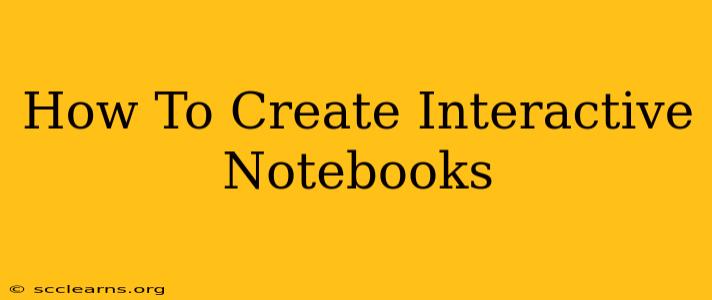Interactive notebooks are revolutionizing how students learn! They're not just passive repositories of notes; they're dynamic tools that transform learning into an active, engaging process. This guide will walk you through creating interactive notebooks that boost understanding and make learning fun.
What is an Interactive Notebook?
An interactive notebook is a personalized learning tool where students actively participate in the learning process by combining notes, activities, and reflections in a single notebook. It's a blend of traditional note-taking and hands-on activities, fostering deeper understanding and retention. Think of it as a personalized textbook, constantly evolving with the student's learning journey.
Key Components of a Successful Interactive Notebook:
1. The Structure: Setting the Stage for Success
-
Left-Hand Side (LHS): This side is usually dedicated to direct instruction, including notes, vocabulary, diagrams, and key concepts from the lesson. Think teacher-led activities.
-
Right-Hand Side (RHS): This side is for active learning and student expression. This is where students apply what they've learned through activities, drawings, reflections, examples, and creative projects. Think student-led activities.
-
Clear Labeling and Organization: Use tabs, dividers, and clear labeling to keep the notebook organized and easy to navigate. This is crucial for easy reference and review.
2. Engaging Activities to Fill Your Notebook:
Here are some ideas to make your interactive notebooks truly interactive:
- Foldables: These creative folds transform pages into pockets, flaps, and mini-books, making information more accessible and engaging.
- Concept Maps: Visually represent relationships between concepts using diagrams and keywords.
- Drawings & Illustrations: Visual learners thrive on drawings. Encourage students to illustrate key concepts and vocabulary.
- Real-World Examples: Connect abstract ideas to real-world situations to make them more relatable and memorable.
- Graphic Organizers: Use charts, tables, and other organizers to structure information effectively.
- Reflective Prompts: Include space for students to reflect on their learning, identifying what they understood and what they still need to work on. This promotes metacognition.
- Interactive Games & Puzzles: Incorporate simple games and puzzles to reinforce learning in a fun way.
3. Choosing the Right Notebook:
- Size: A standard-sized notebook (college-ruled or wide-ruled) generally works well.
- Binding: Spiral or ring-bound notebooks are best for easy turning and adding extra pages.
- Durability: Choose a durable notebook that can withstand regular use.
4. Implementation Strategies for Maximum Impact:
- Collaboration: Encourage students to collaborate and share ideas, fostering a sense of community learning.
- Differentiation: Adapt activities to meet the diverse learning needs of your students.
- Regular Review: Schedule regular review sessions to reinforce learning and ensure the notebook remains a valuable resource.
Benefits of Using Interactive Notebooks:
- Improved Comprehension: Active engagement boosts understanding and retention.
- Enhanced Organization: A well-organized notebook helps students stay on track and access information easily.
- Increased Engagement: Fun and creative activities make learning more enjoyable.
- Personalized Learning: Students tailor their notebooks to their learning styles and needs.
- Assessment Tool: The notebook itself can serve as a valuable assessment tool, showcasing student understanding and progress.
Beyond the Basics: Advanced Interactive Notebook Techniques
- Digital Interactive Notebooks: Explore digital platforms for creating interactive notebooks, leveraging technology for enhanced engagement.
- Subject-Specific Approaches: Tailor your approach based on the subject matter – a science notebook will look different from a history notebook.
- Peer Review and Feedback: Incorporate peer review to encourage feedback and collaborative learning.
By implementing these strategies and tips, you can create engaging interactive notebooks that not only enhance the learning experience but also foster a deeper, more lasting understanding of the subject matter. Remember to tailor the activities to your specific audience and learning objectives for optimal results.

